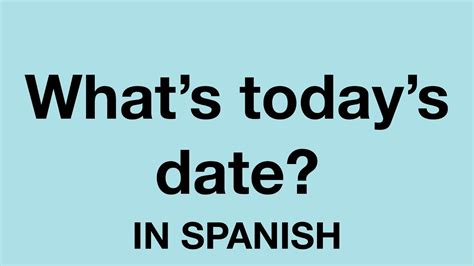Do you know how to say the date in Spanish? It’s a useful piece of information to know, whether you’re planning a trip to a Spanish-speaking country or you just want to impress your Spanish-speaking friends.

How to say the date in Spanish
The basic format for saying the date in Spanish is:
Day of the week + number + de + month + de + year
For example, to say “today is March 8, 2023” in Spanish, you would say:
Hoy es 8 de marzo de 2023
Days of the week
The days of the week in Spanish are:
- lunes (Monday)
- martes (Tuesday)
- miércoles (Wednesday)
- jueves (Thursday)
- viernes (Friday)
- sábado (Saturday)
- domingo (Sunday)
Months of the year
The months of the year in Spanish are:
- enero (January)
- febrero (February)
- marzo (March)
- abril (April)
- mayo (May)
- junio (June)
- julio (July)
- agosto (August)
- septiembre (September)
- octubre (October)
- noviembre (November)
- diciembre (December)
Numbers
The numbers from 0 to 10 in Spanish are:
- 0 – cero
- 1 – uno
- 2 – dos
- 3 – tres
- 4 – cuatro
- 5 – cinco
- 6 – seis
- 7 – siete
- 8 – ocho
- 9 – nueve
- 10 – diez
Examples
Here are some examples of how to say the date in Spanish:
- Hoy es 1 de enero de 2023 – Today is January 1, 2023
- Mañana es 2 de enero de 2023 – Tomorrow is January 2, 2023
- Ayer fue 31 de diciembre de 2022 – Yesterday was December 31, 2022
- El 4 de julio es el Día de la Independencia de los Estados Unidos – July 4 is Independence Day in the United States
- Mi cumpleaños es el 15 de septiembre – My birthday is September 15
Common mistakes to avoid
Here are some common mistakes to avoid when saying the date in Spanish:
- Don’t forget the de before the month and year.
- Don’t use the definite article el before the day of the week.
- Don’t use the preposition en before the year.
- Don’t use the word hoy (today) when referring to a date in the past or future.
